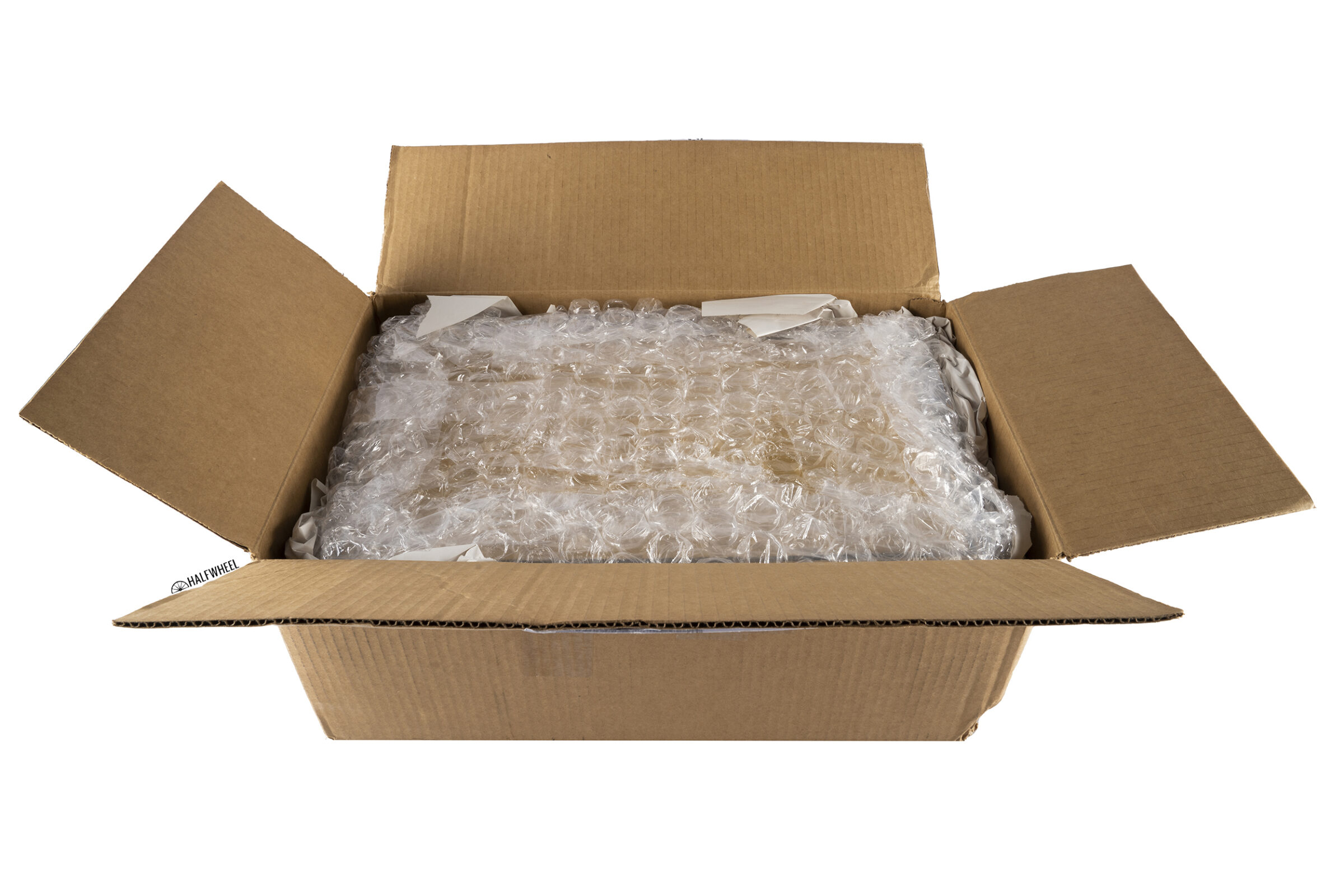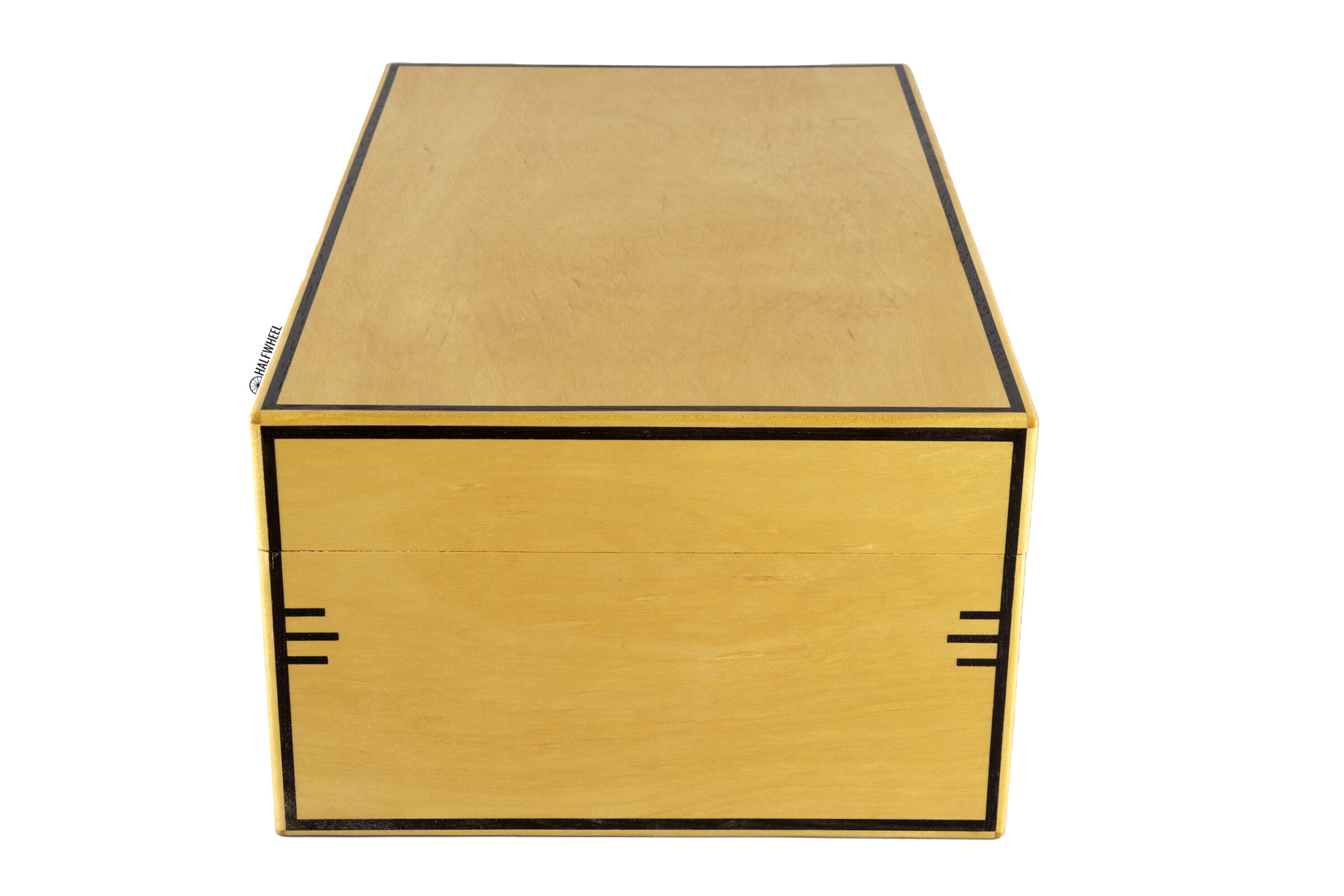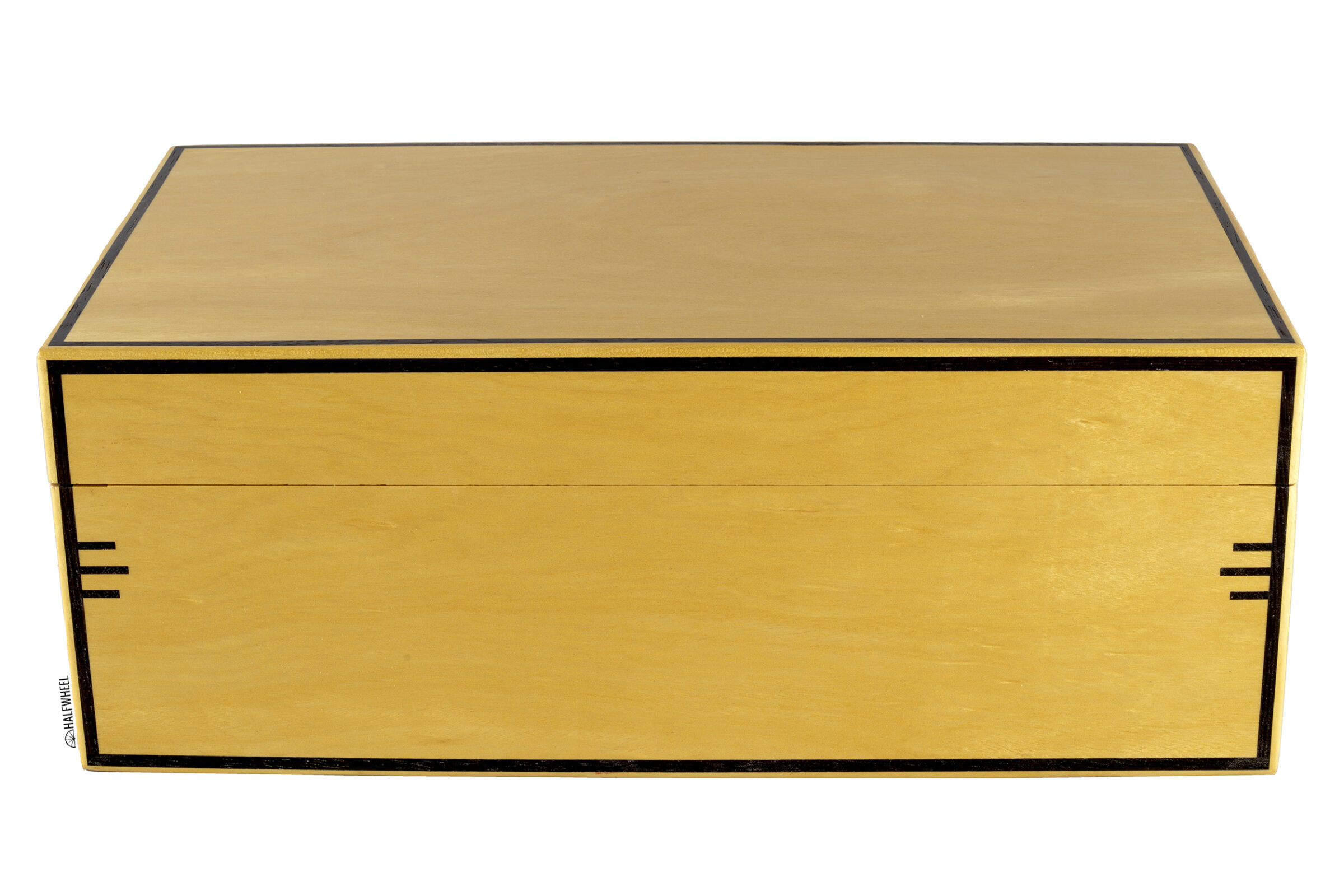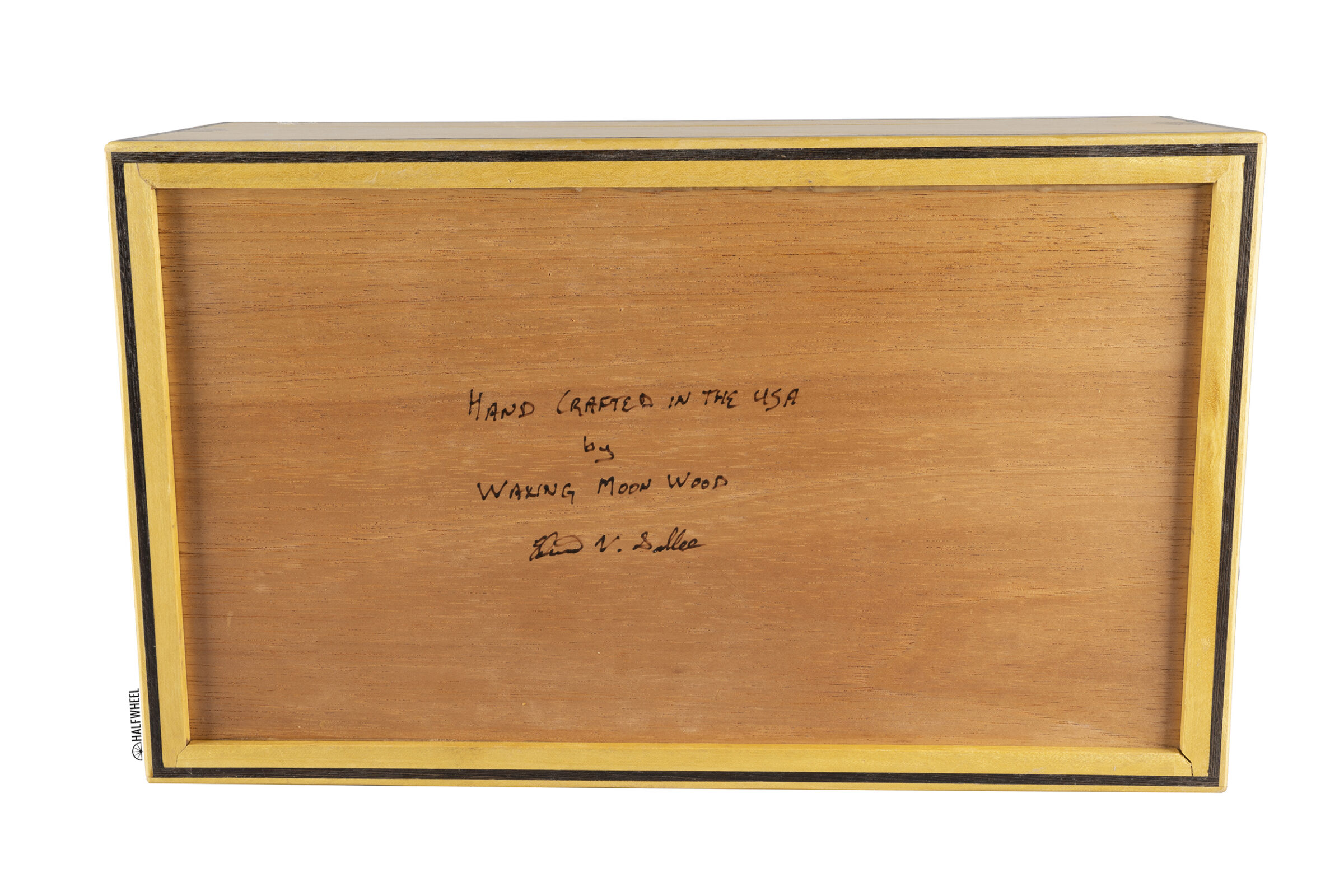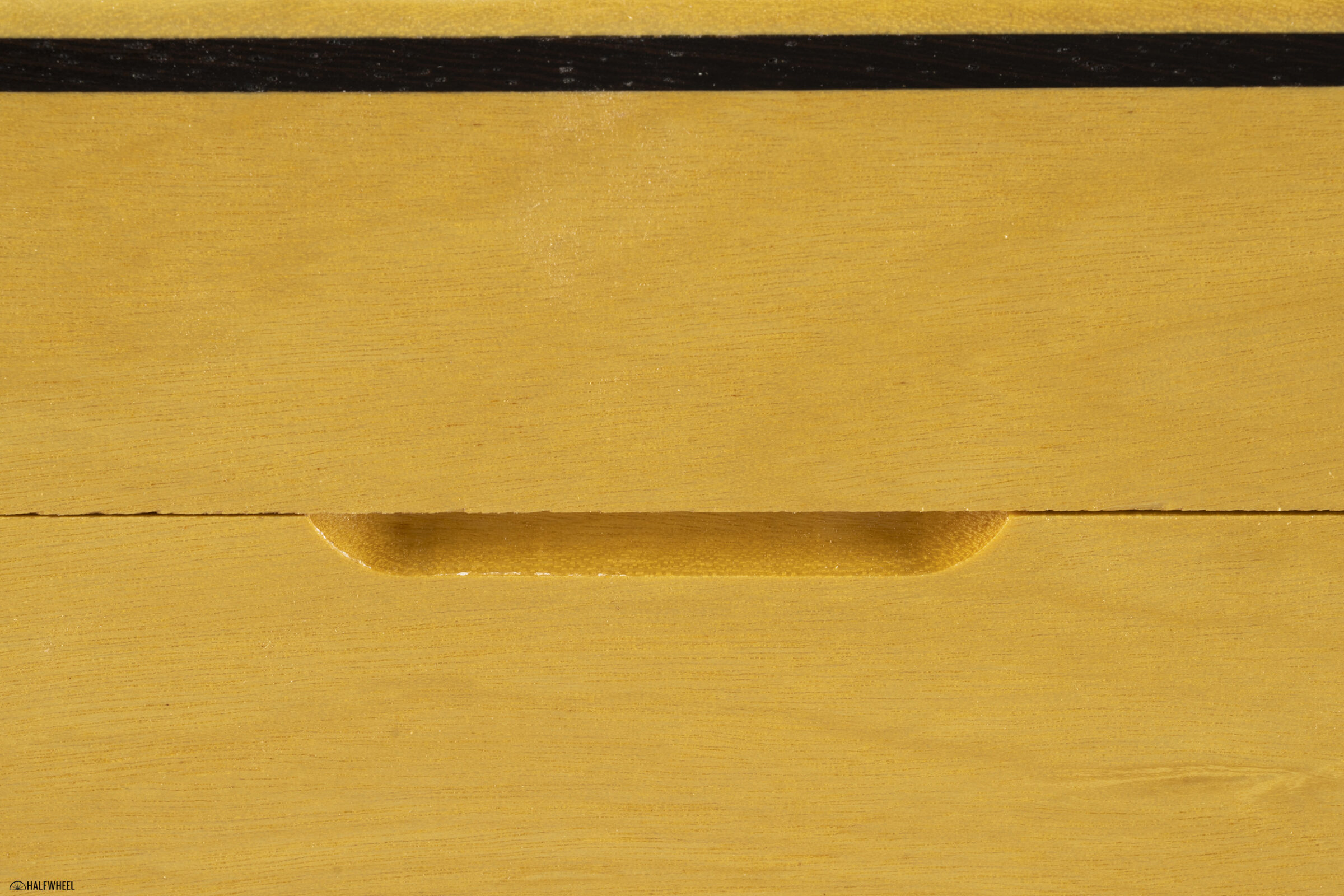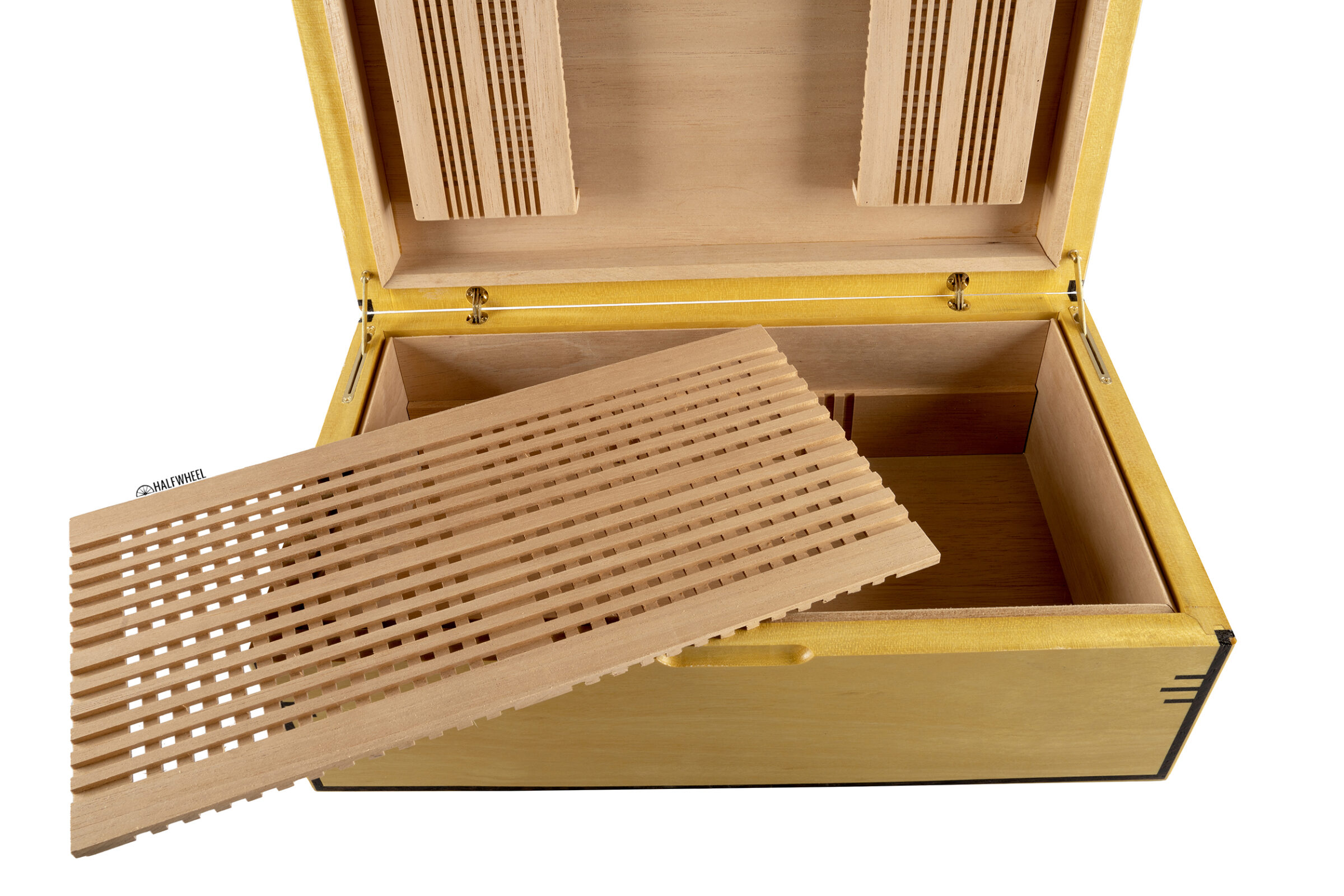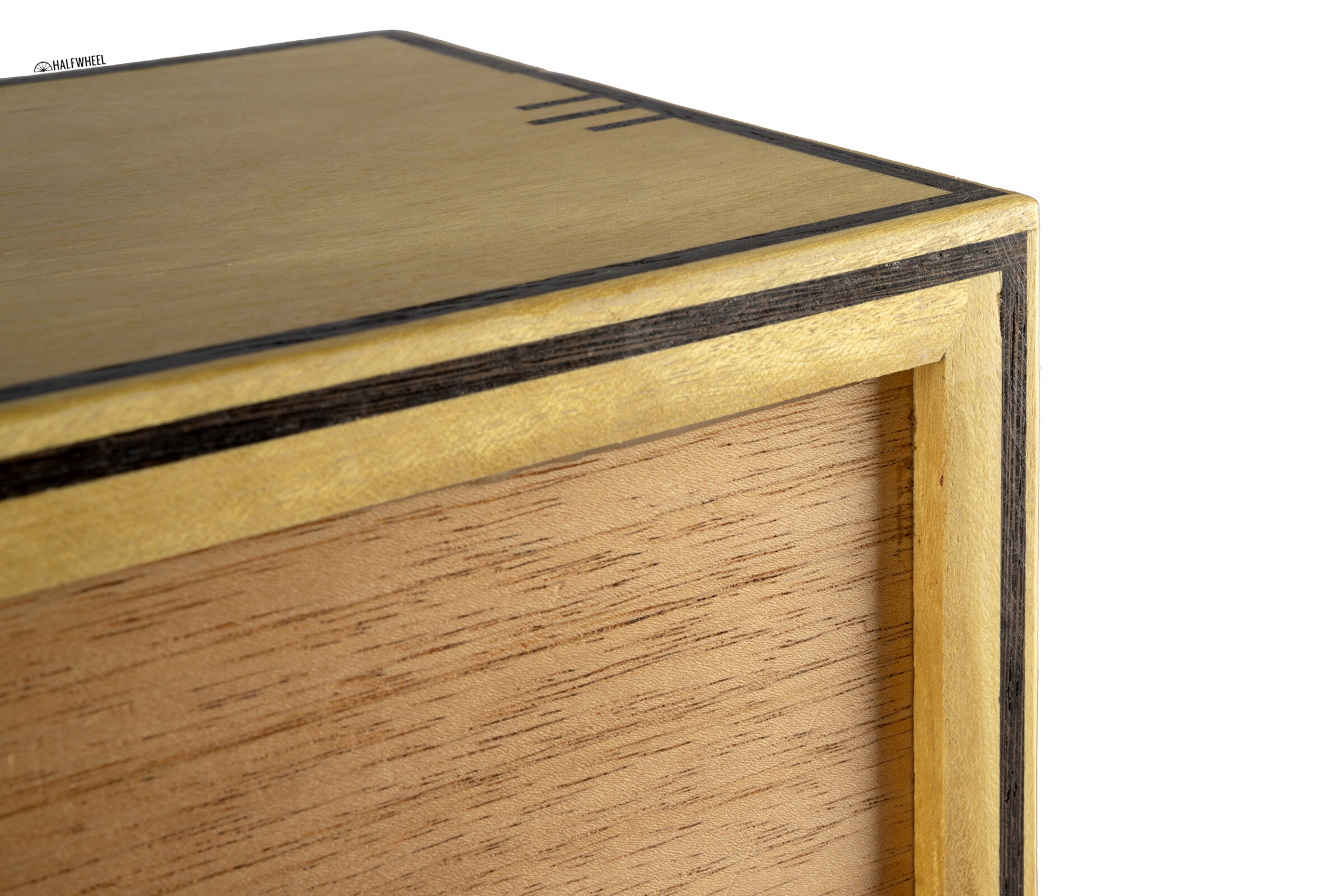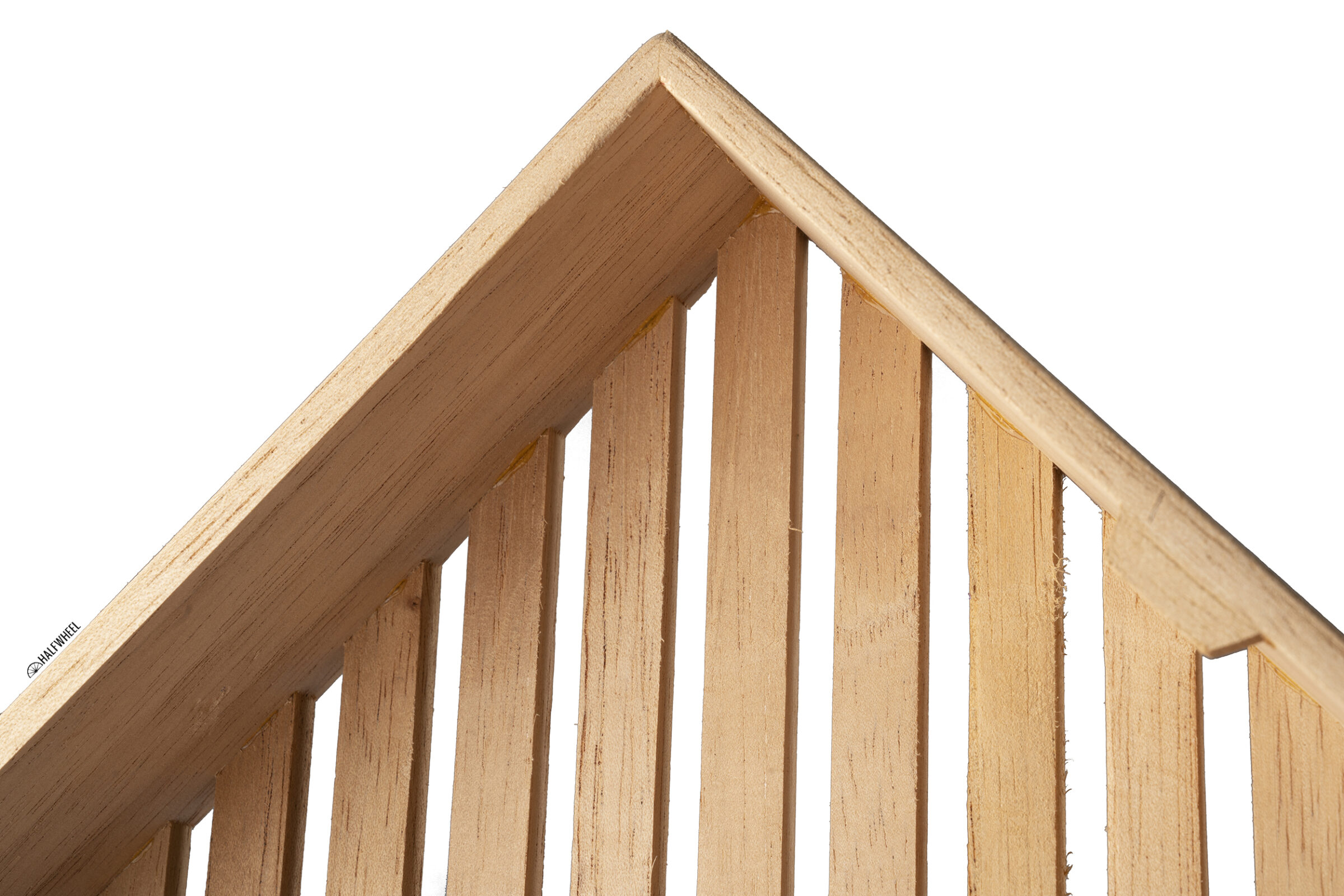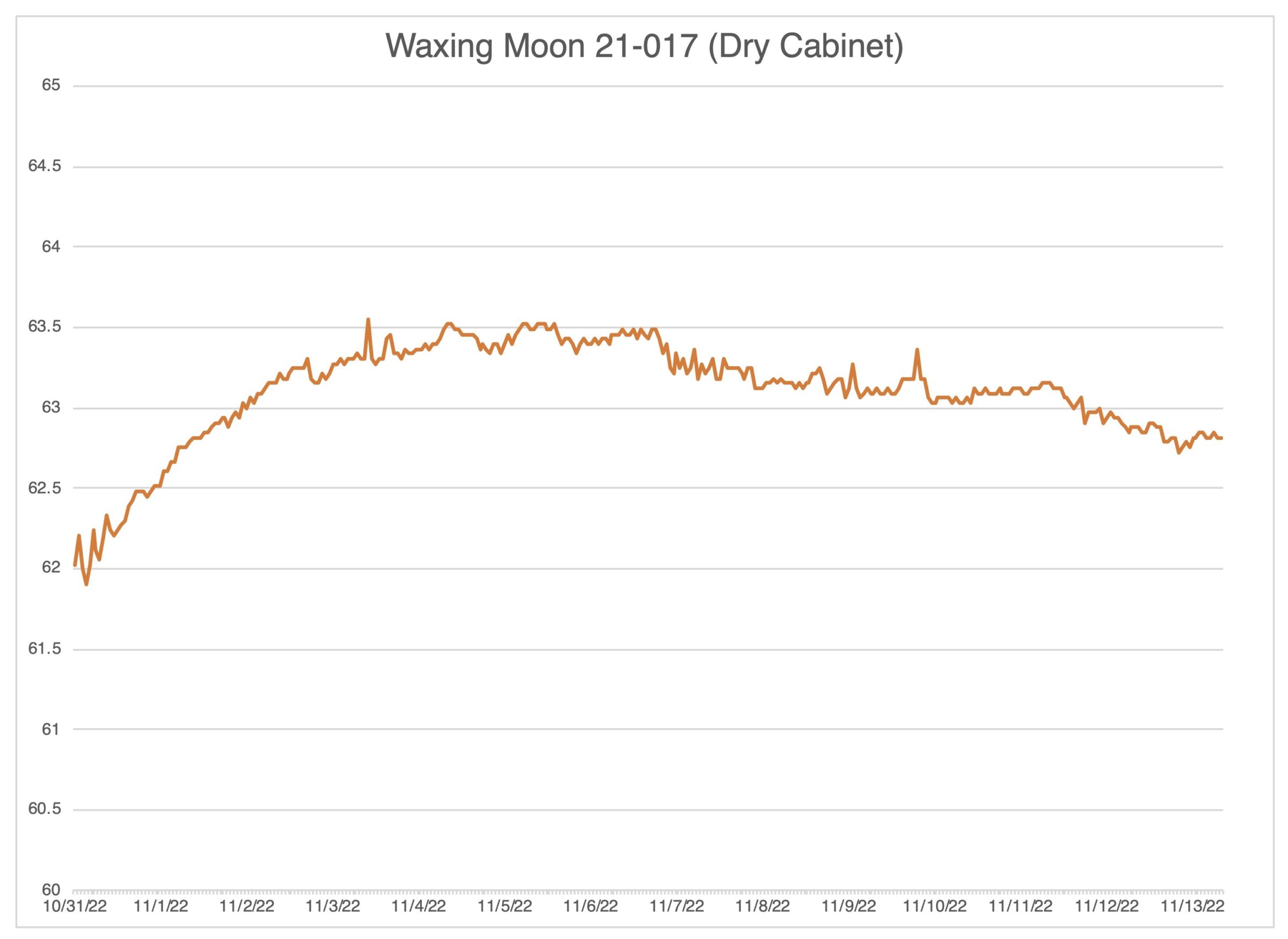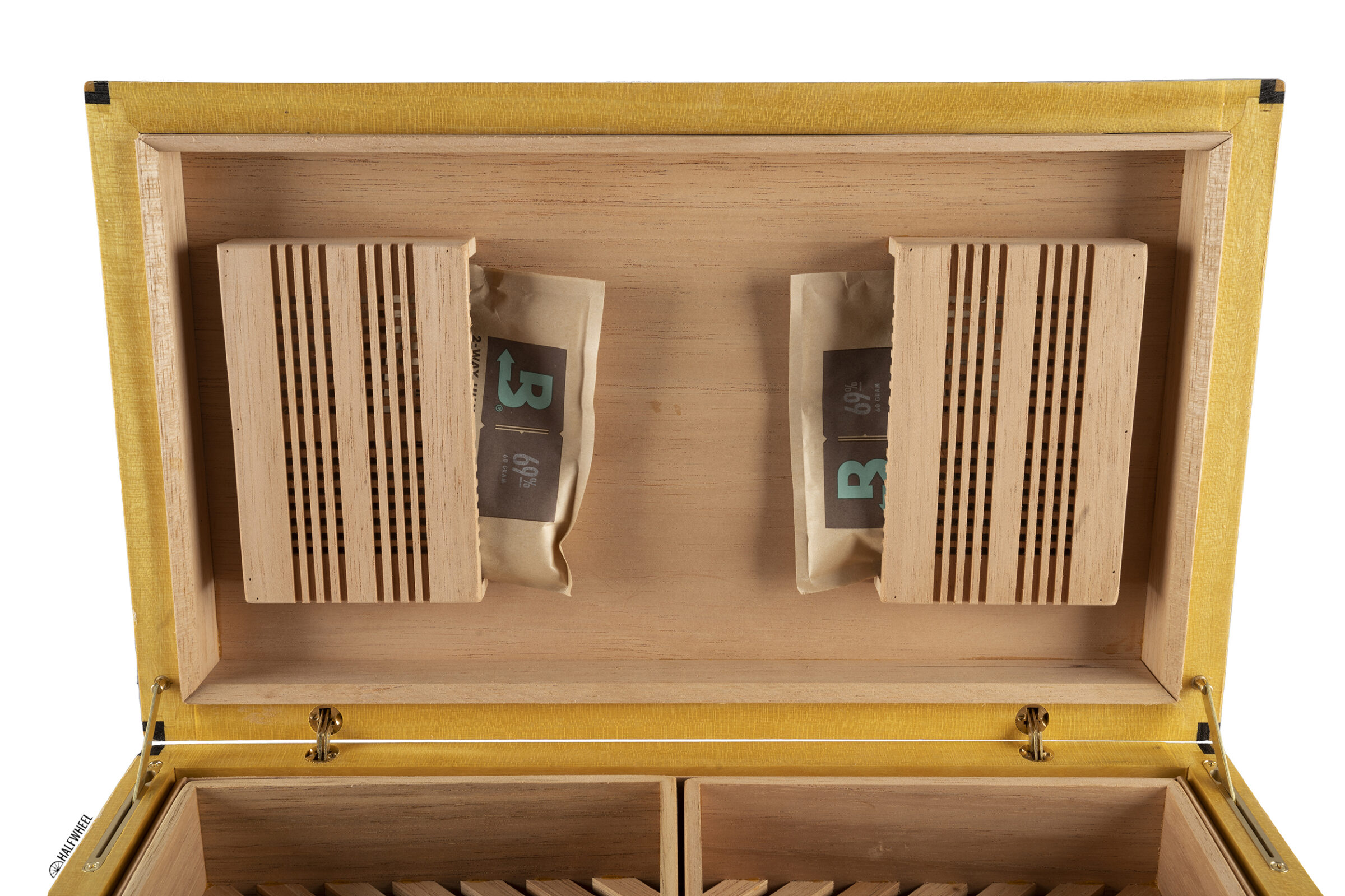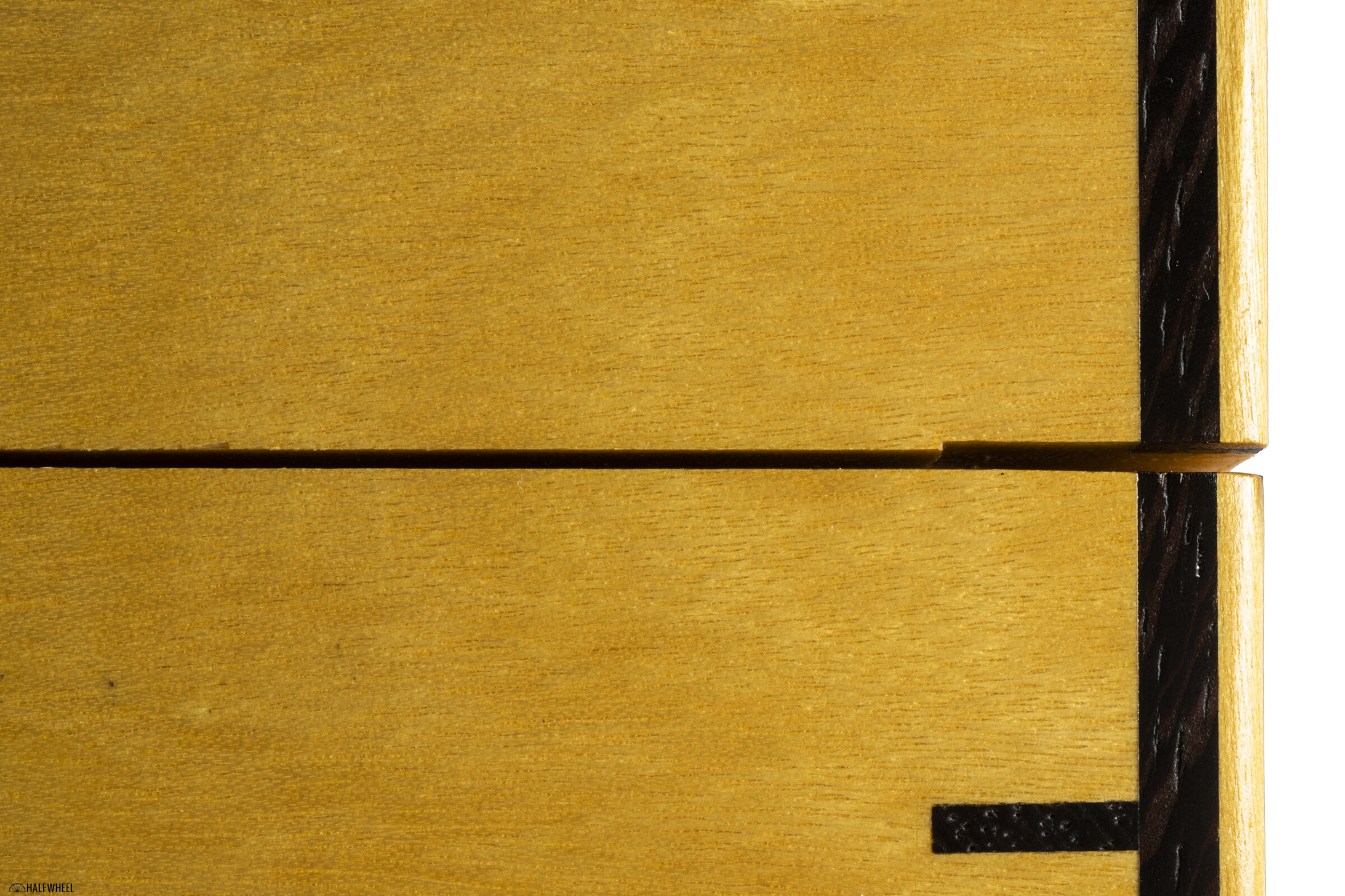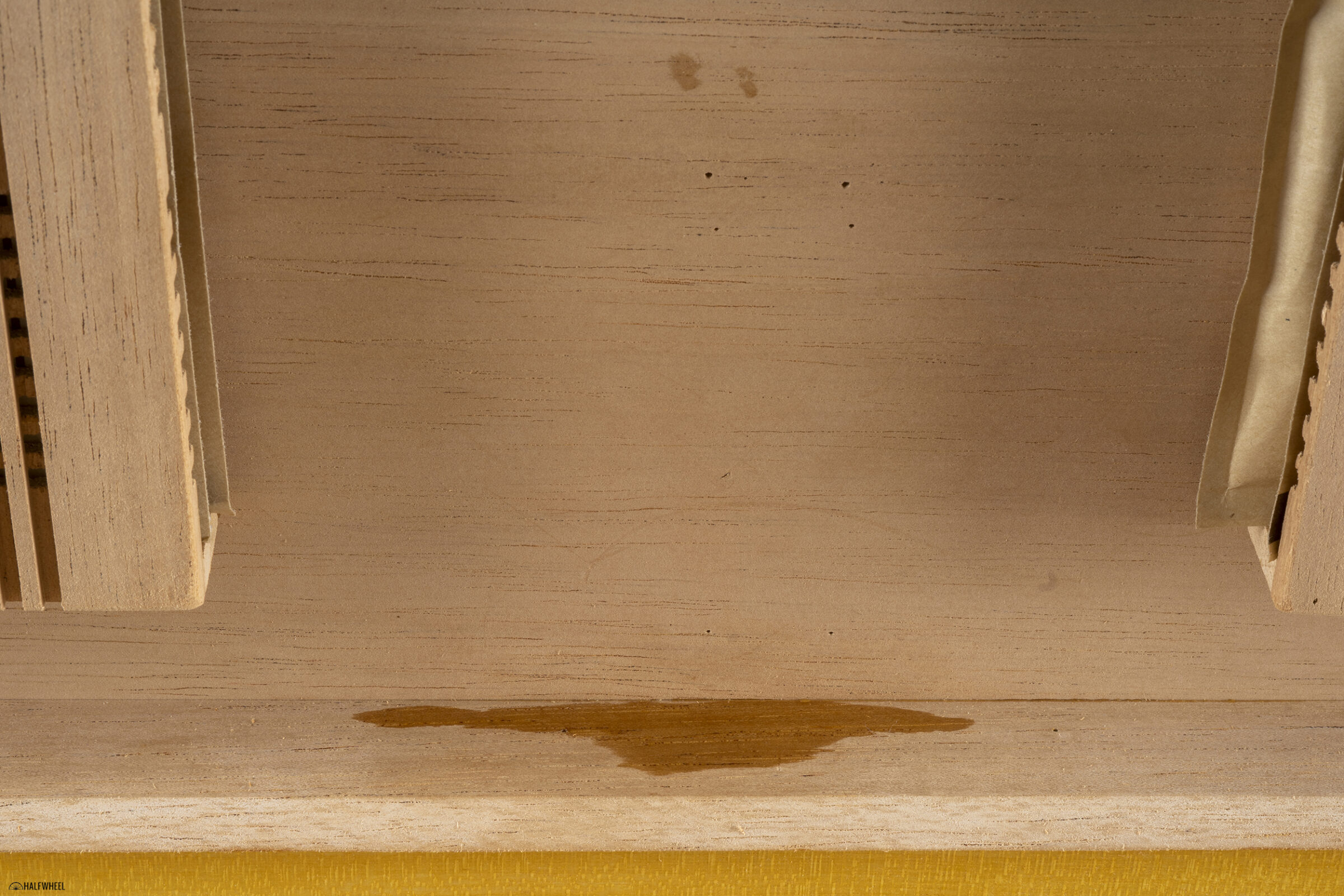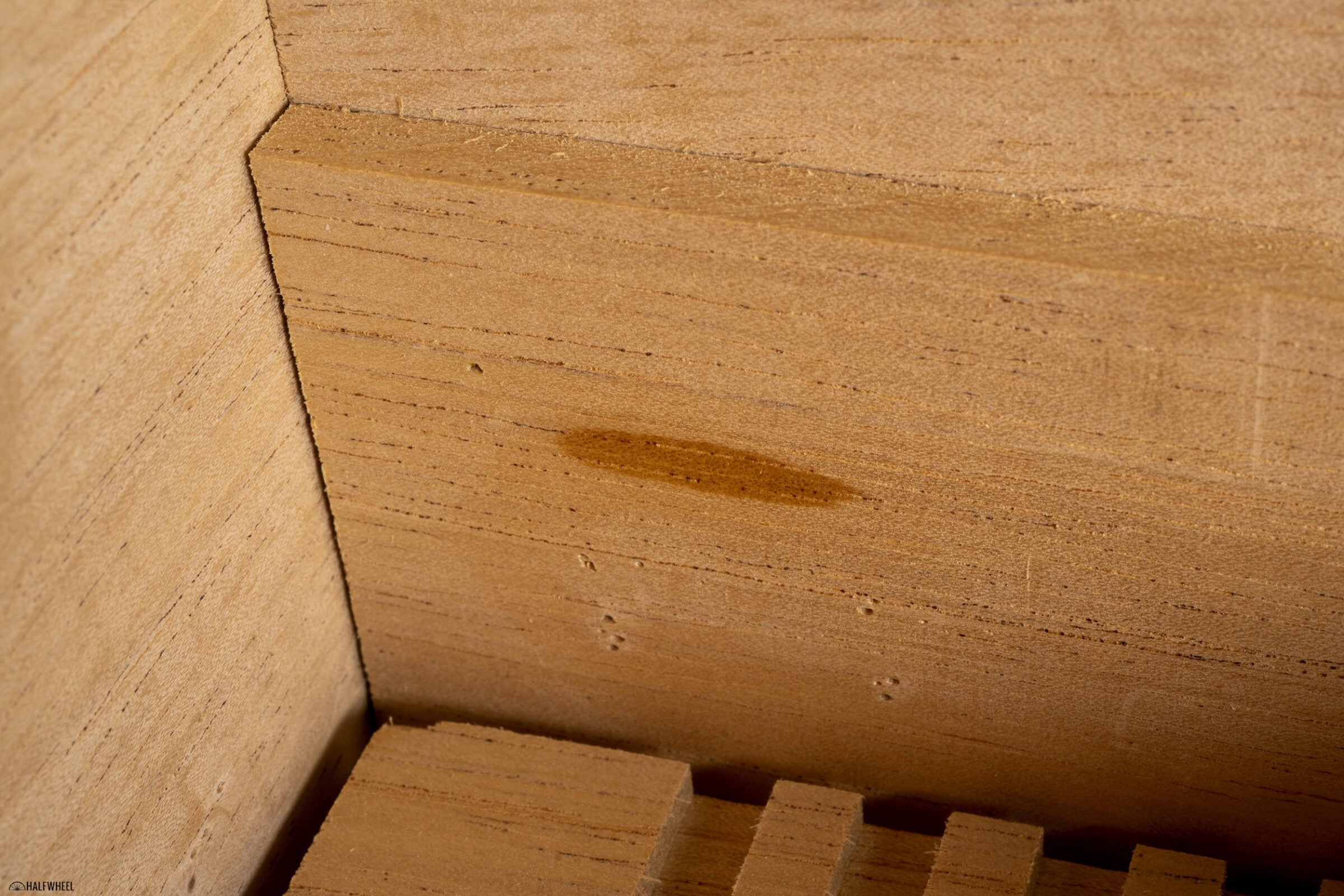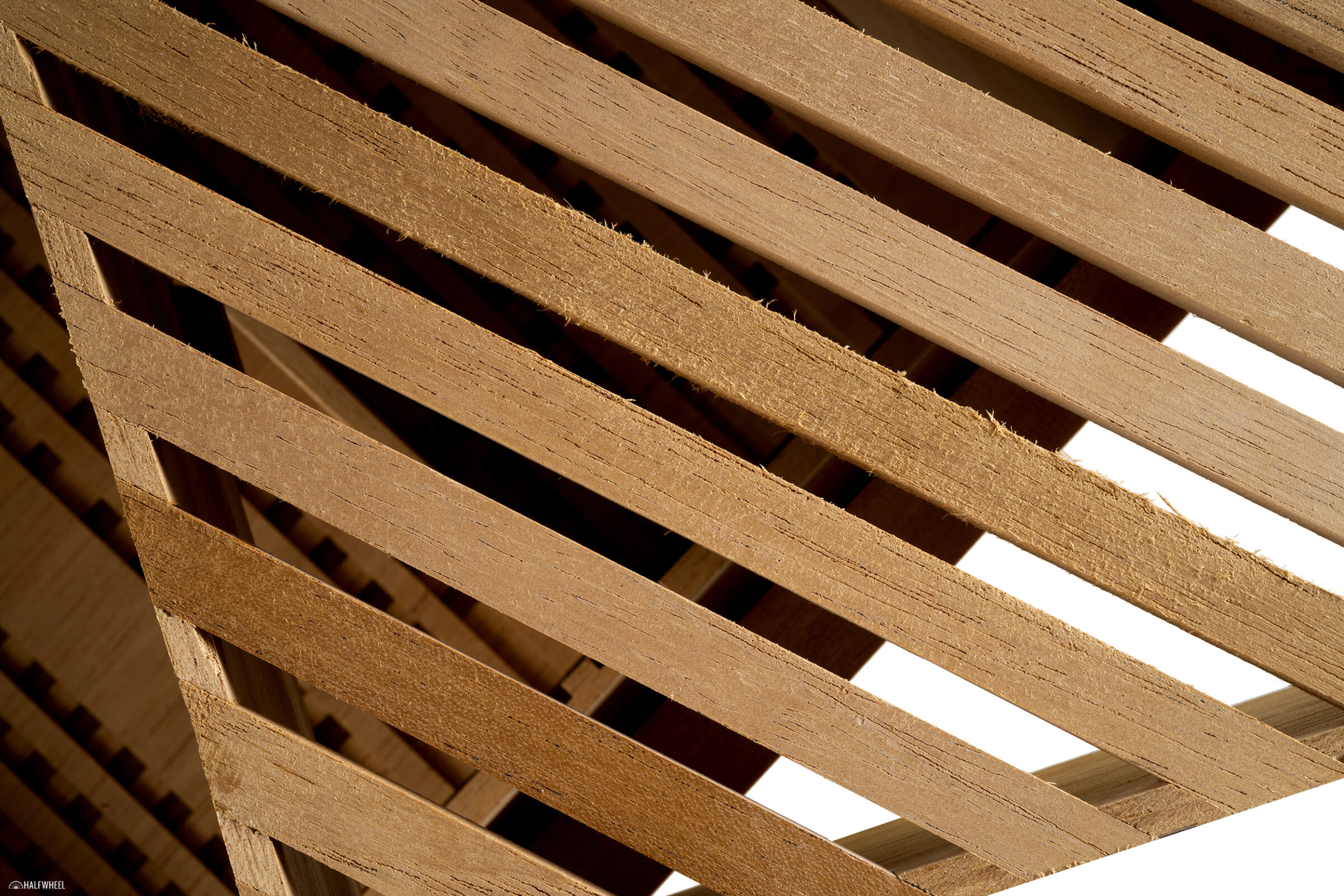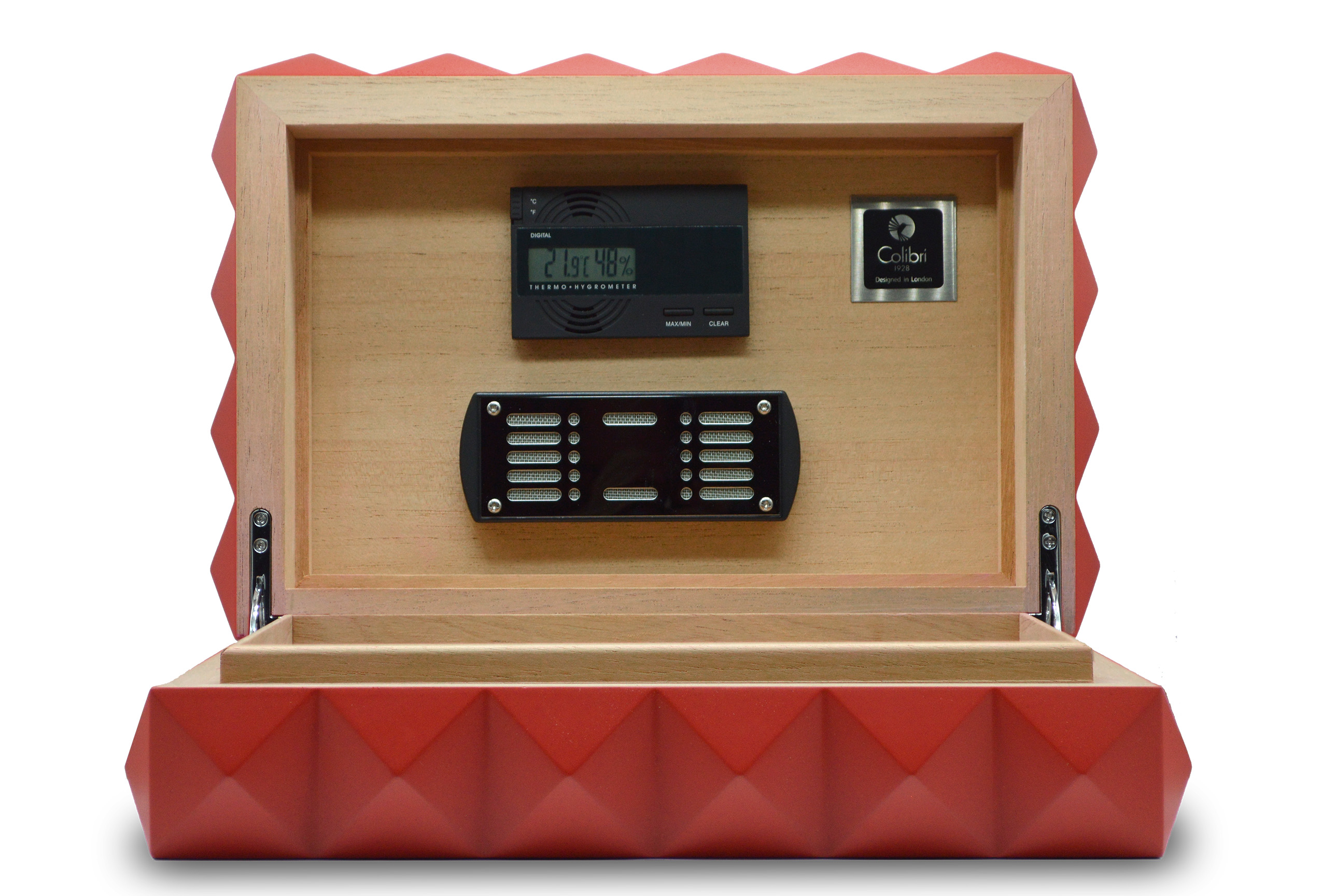Humidor reviews are much more complicated than reviews of lighters or cutters. They take a lot longer to complete, there’s a lot more that can go wrong, and humidors tend to be more expensive, so I am selective about what gets purchased to review. I’ve debated reviewing a Waxing Moon humidor for a while; the brand has been around for more than a decade and has produced hundreds—if not thousands—of humidors, so it’s not a fly-by-night operation or an amateur woodworker making two humidors per year. On the other hand, its products tend to be customized—and therefore one-offs—and they aren’t sold in stores—so how useful is it to review a one-of-one humidor?
But then I remembered the first ethos of this site: we want to produce the cigar blog we’d like to read.
I’d like to read a review of a Waxing Moon humidor. So here we are.
WHAT IS IT?
Waxing Moon is based in Albert Lea, Minn. Ed Sallee, the founder of Waxing Moon, began making humidors as a full-time occupation in 2009. I remember the early days of Waxing Moon, reading about it on forums like Puff and BOTL. As time went on, I spent less and less time on cigar forums, which is really the only place I ever had exposure to the company. Despite this, Waxing Moon has always remained in the back of my mind as a potential option for a humidor review.
Waxing Moon sells directly to consumers, bypassing traditional retail channels. This allows for not only lower prices but also for customization in a way that most humidor makers cannot offer. There are five lines of humidors the company makes—four of them are offered in three different sizes—that vary by the number of woods used or the shape of the humidor, but each humidor can be customized in a seemingly endless way with options ranging from upgraded woods to different humidification options to even features like adding a mirror to the inside lid. Waxing Moon also makes completely custom humidors.
While I’m certainly not an expert on Waxing Moon humidors, this model seemed to be a fair representation of the humidors I’ve seen from the company over the years: more detailed woodworking on both the inside and outside, built-in Boveda humidification holders, a crumb catcher, multiple trays, etc.
This particular humidor is 21-017 and was listed for sale for $700 in mid-2021. While many Waxing Moon humidors are built-to-order, the company does have already-made or partially-completed humidors for sale in its storefront, which is how I ran across this particular humidor.
There are several things that make a Waxing Moon humidor different from most humidors sold in America. The lack of retail sales means there isn’t a traditional production pipeline. Unlike most companies, Waxing Moon isn’t expected to fulfill wholesale orders with identical products, so it can make whatever it and the end consumer wants. Beyond the business differences, there are physical differences. The company makes no bones about how its humidors are designed: American hardwoods are used for the exterior shell and 1/4-inch thick Spanish cedar is used for the interior lining instead of a thin sheet of Spanish cedar veneer.
Obviously, the customization creates an endless amount of possibilities, but other standard features include nicer brass hardware than what is found in most humidors, as well as what the company describes as a crumb catcher, a removable piece of slotted Spanish cedar that sits at the bottom of the humidor that is said to increase the airflow within the humidor. While it does offer glossy finishes, Waxing Moon’s website suggests that most humidors aren’t covered in high-gloss lacquer, like what you’d see from most other humidors at this price point.
HOW MUCH DOES IT COST?
We paid $700, which included shipping, for this humidor in June 2021.
Each Waxing Moon humidor is different, but a similar-sized Cygnus series humidor starts at $625 shipped.
WHAT’S INCLUDED?
- The humidor
- Two removable trays
- Removable crumb catcher
- Two removable dividers
HOW LARGE IS IT INSIDE?
I measured the interior dimensions at 8.375 inches x 15.5 x 5, for an interior volume of 649 cubic inches, but that’s not indicative of what is the actual usable space. The two very large Boveda holders are not removable and will absolutely smash and destroy a cigar if you are not careful. I would recommend only using the not piling up any cigars, which means the height is just shy of 4 inches. However, the crumb catcher will shave another quarter of an inch off that number. Furthermore, the removable dividers go into slots, which also serve as the mount for the trays. Those are created out of two pieces of wood, which, unfortunately, take another half-inch of interior space away. The trays also subtract a half-inch of depth and a full inch of width.
I think a safer number would be 471 cubic inches of interior space. Per Humidor Discount’s Humidor Calculator, that’s good for 93 robustos.
Exterior dimensions were advertised at 10.5 inches 17.5 x 7; I found them to be more like 10.45 x 17.375 x 6.6.
WHAT MAKES IT SPECIAL?
These are made by—I think—one person, oftentimes to order. It’s a completely different process of making goods than most of the world today. I do think the build process is always better than commercial humidors, but it’s different.
HALFWHEEL’S HUMIDOR TESTING PROCESS (2022 REVISION)
Last year, I updated the testing procedures used for humidors. Each humidor goes through a standardized testing process for seasoning, use with Boveda packs, use with the included humidifier and a test in a dry cabinet to evaluate the seal.
Measurements are taken via a scale, two SensorPush devices and a moisture meter.
Ideally, each humidor follows this standardized process:
- Boveda seasoning packs for 14 days (Weigh before and after, use moisture meter before and after.)
- Boveda packs for 13 weeks (Weigh before and after, measure with moisture meter after.)
- (Optional Reseasoning)
- Included humidifier for eight weeks (Optional refill at 28 days, measure with moisture meter after.)
- (Optional Reseasoning)
- Two weeks inside of the dry cabinet. (Measure with moisture meter after.)
For this humidor, the optional reseasoning processes were not needed for the Waxing Moon. Furthermore, Waxing Moon does not come with an included humidifier, so Step 4 was also skipped.
During each of these steps—with the exception of the optional refill during the included humidifier part—the humidors are closed. The only times a humidor is opened are when I’m moving from one step to another and need to switch out the humidification elements and use the moisture meter. In addition, the humidors are pretty much empty during these tests. Inside are the two SensorPush devices, the humidification element(s) and the included dividers and/or trays, but no cigars or anything else.
Per Boveda, I’m told that for every 200 cubic inches of volume, you should use one 60-gram pack and to round up to the nearest 200 cubic inches.
SEASONING
I started with the initial two-week seasoning process using four 84 percent Boveda packs and the readings barely cracked 69 percent. Given this, I left those packs in the humidor for another two weeks and the readings peaked at 71.48 percent. The Boveda packs were doing something as they had lost nearly 45 percent of their weight during that time.
I decided to do another round of seasoning with six new packs. It didn’t seem to make that much of a difference, though the readings were beginning to go past 72 percent after two weeks. After another two weeks—so four weeks with the six packs—the Boveda packs had lost a little more than a quarter of their weight. At that point, I wasn’t wanting to do more seasoning as the humidor had stabilized and the Boveda packs didn’t seem to be working as hard as they were before. It is possible to overseason a humidor, so I stopped after six weeks of seasoning.
BOVEDA
Using the generous 649 cubic inches of volume figure, Boveda would call for four packs since the recommendation is one pack for every 200 cubic inches and to round up. But given how the seasoning went, I felt like that would likely end up not being enough. I continued with six packs and I’m pretty sure that wasn’t enough.
Over the course of more than three months, the humidor stayed in an acceptable range, though it certainly could be better.
For this test, I’m less concerned with whether it’s 66 percent or 69 percent. I’m more concerned with how the trend line looks, how aggressive a decline might be, and to a lesser extent, the weight of the Boveda packs.
On one hand, the Boveda packs only lost about 38 percent of their weight—for context, an Elie Bleu humidor that might as well be the standard for this test had lost 34 percent in the same time—but on the other hand, the Elie Bleu humidor had much more consistent relative humidity numbers.
Looking back on this now, it’s pretty apparent to me that Boveda’s recommended one pack per 200 cubic inches is based on the reality that most humidors either don’t use Spanish cedar or use very thin Spanish cedar veneers. This humidor has exponentially more Spanish cedar—a porous wood—than most humidors and as such, probably needs a lot more Boveda packs than normal, at least for the early parts of use. I’m sure after a while that the wood will absorb most of the moisture it can and won’t be as thirsty, but I’d recommend being aggressive with the number of packs—not necessarily the percentage—in the early days.
One thing I picked up on after this test was that the packs at the bottom of the humidor were pretty firm, while the ones that were stored in the lid were pretty pliable. I’m not really sure what the cause is. It could be that the wood at the bottom of the humidor didn’t get seasoned as well or it could be that humidity rises—there are several potential explanations, but the difference was stark.
INCLUDED HUMIDIFIER
The Waxing Moon 21-017 doesn’t come with an included humidifier, so this part was skipped.
DRY CABINET
It performed extremely well, I believe the best of any humidor I’ve tested. This is a great endorsement of well this humidor is able to seal.
THE GOOD
- It Works — While the numbers might not be the best I’ve seen, they are very good. I am pretty convinced that this works quite well at the basic job of a humidor, which is keeping the humidity inside. As noted throughout the review, I think you are going to want to have more humidification than you would normally need, but the performance of the box itself is quite good. I would recommend more Boveda packs versus increasing the humidity level.
- Great Value Proposition — At $700, it’s solidly out of the cheap Chinese-made humidor options, but it’s competitive with some of the best Chinese-made humidors. As of 2022, J.C. Newman sell a 160-count Diamond Crown that is about the same size inside for $685. There are pros and cons between both, but the fact that this American-made, can-be-customized humidor is in the same price range as a similarly-sized production humidor from China is a pleasant surprise.
- Customization But With Guidance — I originally figured I would order a more customized unit, but after thinking about it, I decided I was more than okay with this humidor. I think some people will really enjoy the endless possibilities that Waxing Moon provides, but many, maybe even most will probably find that to be overwhelming. Waxing Moon strikes a great balance with having its five series of humidors as starting points but allowing the customer to also have the option to go well beyond that.
- Made in America — There aren’t many humidors made in America, and this is one of them.
- It’s Substantial — This humidor is not going to get lost. It’s large and heavy; it weights 14 pounds. You are never going to feel like this is flimsy or hollow. It has a sturdiness that makes you think it will outlive you.
- It Doesn’t Feel “Off the Shelf” — The Japanese have this philosophy of aesthetics, a major pillar of it is known as wabi-sabi—not to be confused with wasabi—which, amongst other things, asks you to find the beauty in imperfections. Ever since learning about wabi-sabi, the idea of beauty in imperfections has stuck with me. It can be found here, though Western culture would celebrate this more as a “handmade” object. The point is, it’s not perfect. It doesn’t look like it was made by a machine; some of that is uniqueness, some of it is more like roughness. Whatever the case, objects like this can tell a story in a way that perfectly CNC’d items cannot.
THE BAD
- It Has Become Difficult to Open — From very early on, this humidor has had an issue where the right side of the humidor does not want to open easily. As is shown in the video, I can lift up the entire closed humidor by placing my thumb under the cut-out to open the lid. Obviously, the center cut-out exists to make it easier to open the lid, not the whole humidor itself. Repeatedly opening the humidor seems to loosen it up and make it easier, but even after that, it remains the most difficult-to-open humidor that I’ve ever owned.
- The Front Right Corner Has Issues — The front right corner, pictured above, will not close flush. Once open, I can see that the pieces of wood in the corner are not attached in the same manner as the other three corners. This applies to both interior Spanish cedar pieces on the bottom and top part of the lid. I’m not sure if these two things are related or whether one issue caused the other, but I’m fairly confident that the front right corner is causing the opening issues.
- Spanish Cedar Leaks Sap — The interiors of most humidors are not made out of Spanish cedar, or at least not very much of it. Waxing Moon bucks this trend, which is a major selling point, but also a decision that causes complications.Spanish cedar is porous—which is why it was an ideal choice for humidors prior to the invention of better humidification products—but because it’s porous, there are other complications. One of the known issues is that Spanish cedar can bleed sap or resin. This humidor has had that issue in a few places, with it most visible on the inside part of the lid. The obvious issue is that this sticky substance can get on your cigars, which doesn’t seem to have happened yet, but it is a risk. Unfortunately, there’s not a simple way to get rid of it—either sanding or acetone seem to be the answer—and there does not seem to be a great way to stop it from happening again without sealing the interior wood, which would remove the Spanish cedar smell and the wood’s porous qualities.
- It Needs More Power than Most — This is more of a heads up than a bonafide con. After looking at the data, it’s apparent that Boveda’s recommended amount of humidification is based on what would be needed for most humidors, but this isn’t most humidors. All of that extra Spanish cedar means that you will need more humidification than you would for a similarly-sized humidor that didn’t have the same type of interior.
- The Interior is Not Flawless — Visible flaws include small holes throughout the Spanish cedar lining, excess glue on the trays, and, pictured above, wood that could be sanded down more. I’m sure you could pay more to have Waxing Moon refine the interior, but this humidor has some rough spots in ways that most commercial humidors priced at $500+ will not.
- The Guarantee — Waxing Moon does not have a warranty, it has a guarantee. If you notify the company within 10 days of your humidor’s arrival, you are given the option to have your humidor replaced or repaired, or you can get a refund. Because these humidors are individually produced, there shouldn’t be any quality control questions. It’s great that a small operation has some sort of option, however, I’m not sure how useful the 10 days is except to deal with issues that developed during shipping, which I would consider the absolute bare minimum for any company.
THE COMPETITION
I really struggled to figure out what would be the most logical direct competitor to Waxing Moon. If Michael Dixon still makes humidors, that would seemingly be the most direct competitor. I can’t tell if he is though as the company’s Facebook page hasn’t been updated since 2020. There are a lot of people who are making custom humidors as a semi-professional side hustle, but there aren’t many who have turned it into a full-time business and been around for a decade. I’ve never owned a humidor from Michael Dixon, so I can’t be of much use here.
Additional Competitors
- Savoy Executive Large ($550-580) — While I’ve never owned a large version, I continue to use the smaller Savoy Executive humidor I reviewed in 2014. It’s a great humidor and has never given me issues. This is a very different humidor in the sense that it excels at not having many issues but doesn’t have as many features as Waxing Moon. This is one of the better made-in-China humidors and I’ve looked at it as a standard of what a good humidor should be. I’d buy the Savoy over this Waxing Moon as I’ve found it to be an incredibly low-maintenance experience.
- Diamond Crown Large ($685) — Like Ashton’s Savoy brand, J.C. Newman sells higher-end made-in-China humidors that are very much a competitor to Savoy. Like the Savoy, I think the Diamond Crown humidor is more refined albeit with fewer features than the Waxing Moon. I’d take the Savoy over the Diamond Crown, but the Diamond Crown over this Waxing Moon.
- Daniel Marshall Ambiente 125 ($495-695) — This humidor is made in America but is much more of a production humidor than what Waxing Moon offers. The $695 option includes a tray, but the Daniel Marshall isn’t going to hold as many cigars as the Waxing Moon. This is very much a choice between what you prioritize, as the fit and finish of the Daniel Marshall will be better, though the Waxing Moon’s customization might be able to give you features you care about. I’m really torn between the two, but the tiebreaker goes to the humidor that doesn’t have a difficult lid, I’d recommend the Daniel Marshall over this Waxing Moon.
- JML Modern Use Belle Soirée ($625) — I’ve never used nor even seen this humidor, but this is an example of someone who is offering semi-custom solutions direct to the consumer.
SHOULD YOU BUY IT?
No.
You shouldn’t buy this humidor, but I’m not opposed to recommending someone explore buying a Waxing Moon humidor, I just think the customer needs to be very aware of what you are paying for. This is not going to be as refined of a product as most $500+ humidors, which I think is a choice. There are trade-offs, and Waxing Moon seems to have made some choices about how pretty the interiors will look. I’m guessing that if you spend enough money, they’ll get sanded down and finished as well as just about any humidor you could buy at a store, but not for $700. Then there are the real issues that I had—sap and the problems related to opening—which are problems that are probably related to the use of solid Spanish cedar. That’s a risk that you have to be willing to take if you are going to purchase a Waxing Moon humidor. It wouldn’t surprise me to learn that those issues are more likely explained by chance than they are explained by either error in construction or user error. And if those issues didn’t emerge, I’d be writing about how this humidor is pretty easy to recommend.
There’s one thing that is clear to me, this shouldn’t be your first humidor. It probably shouldn’t be your third humidor. If you are going to go down the rabbit hole of customizing a humidor and then living with a humidor that uses this much Spanish cedar, you should have some experience, both in terms of knowledge and patience. Otherwise, this isn’t likely to end well. So long as you understand all that and are willing to risk that it may not work out, I’m not opposed to making the gamble because if you avoid the issues I had, the value proposition is very high.


